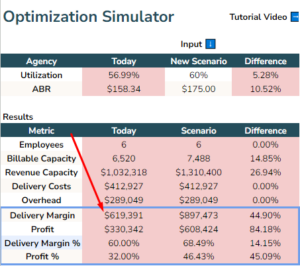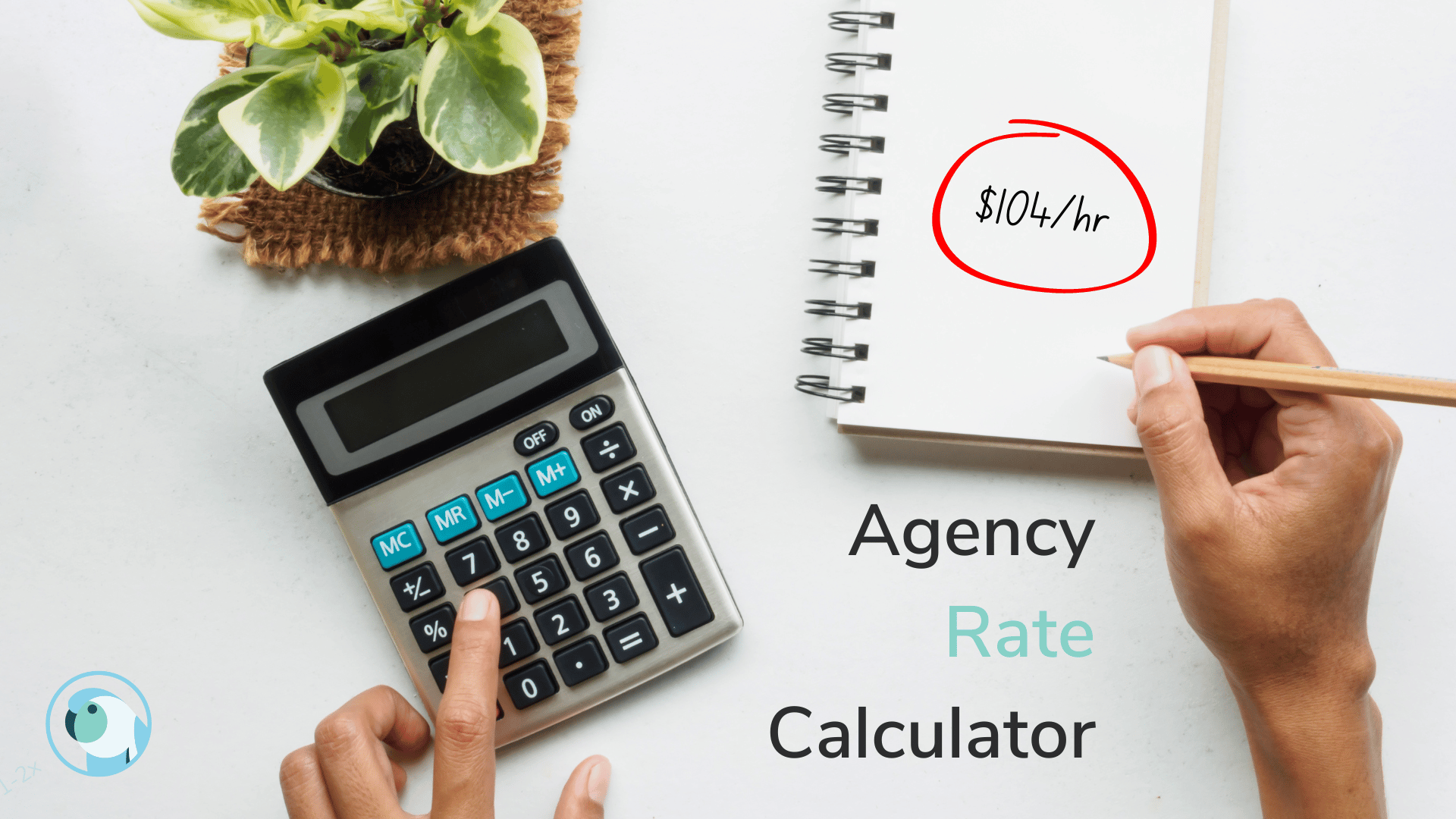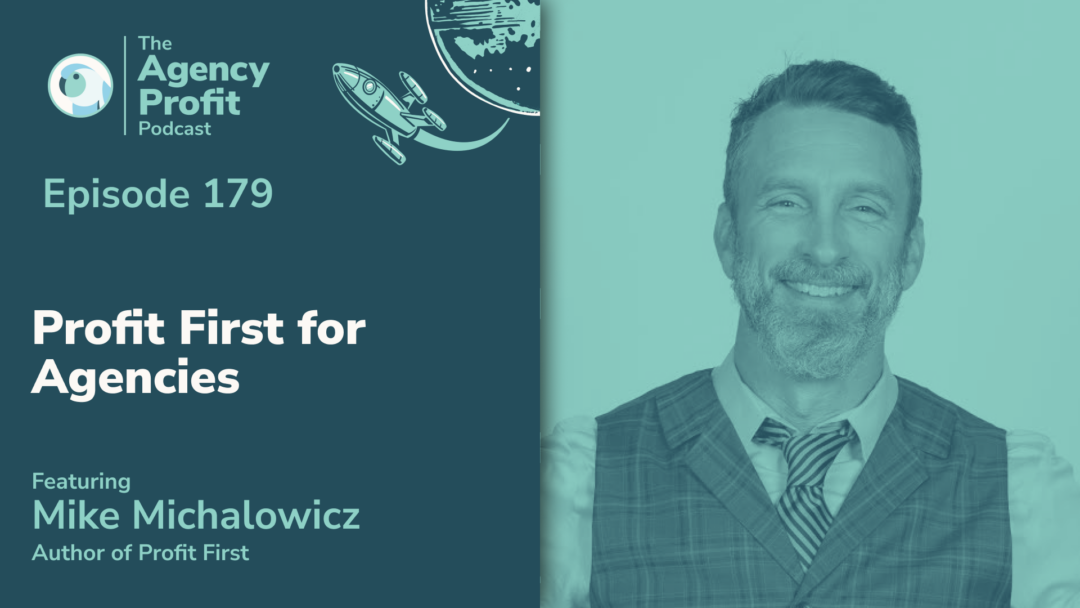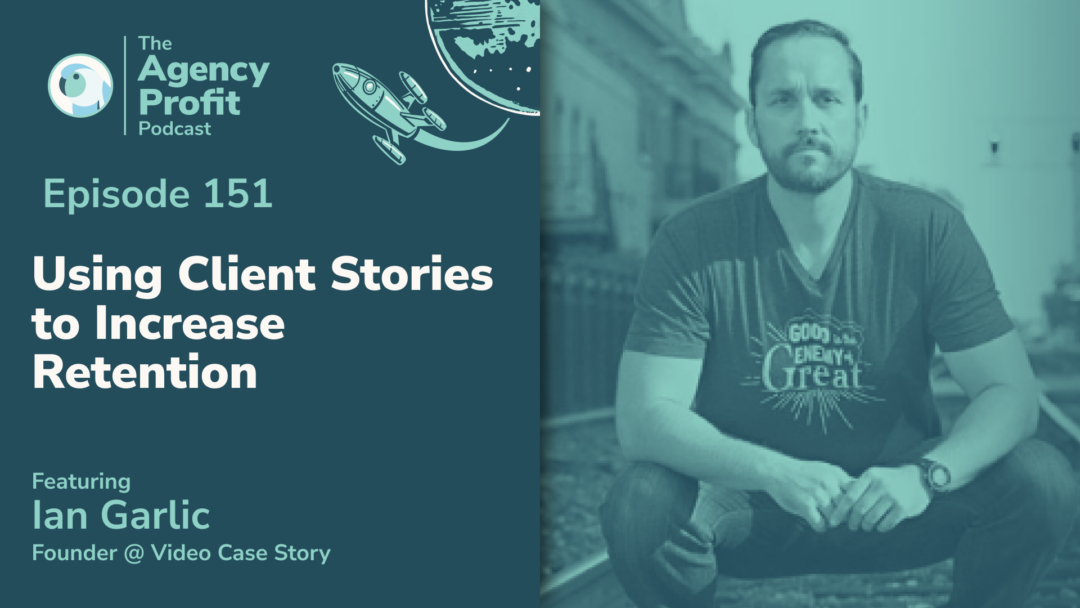ㅤ
For decades, pricing has been (and continues to be) a highly debated topic, and for good reason. It’s only the most critically important contributor to the success of your agency!
If you’ve found your way to this blog post, you probably have more than a few questions floating around in your head – at all hours. These may include such gems as:
- Do we charge enough?
- Conversely, do we charge too much?
- How do our rates really compare to our competitors?
- Am I overthinking this?!
Let’s put those sleepless nights to bed, shall we? Firstly, let us reassure you that, yes, it is absolutely crucial that your agency is charging the right amount. If you’re at the higher level, it is equally important to have the right fee structures in place.
Most agencies that we work with land in thinking they really need to up their sales game to bring in more work for their team. However, in reality, what they actually need is a better process to handle those clients they do close, and to do that at a more efficient rate.
This is what we call Indigestion Vs Starvation. Without the right pricing model in place, likely you’re taking work that actually doesn’t create enough (if any) profit for your agency, and only serves to stress your team out.
Rest assured, once you do a proper deep dive into your pricing strategy, you will be able to take back control of your profit margins, while being much more deliberate about the work you bring in. First up, let’s crunch the calculation(s).
How to Calculate Your Agency’s Rate
There are a couple of different ways you can look at an agency’s rate:
- Firstly, ascertain the rate you charge your clients (hourly, blended, or on a rate card).
- Secondly, look at the rate you earn from clients (if you’re billing on T&M, it’s the same as above. However, if you’re a flat fee shop, it can differ massively)
In this post, we’ll focus on the rate you actually earn. In our books, this is Average Billable Rate (ABR but is can also be known as Effective Hourly Rate (EHR).
Agency Rate Benchmarks
At Parakeeto, we’ve been under the hood of hundreds of agencies in our quest to optimize profitability. In short, we’ve seen it all.
A common question our clients repeatedly ask is this; “What are the benchmarks for agency rates?” In other words, our clients are hoping to know exactly what their competitors are charging. The reality is, your competitor’s price structure is irrelevant – as long as your own agency’s profit margin is healthy and stable. Tend to your own yard, as it were.
As a rule of thumb, you’re going to want your rate target to be at least 2.5x your Average Cost Per Hour (ACPH). The objective is to ensure that you spend no more than 40 cents to earn a dollar of revenue on any given project. Additionally, your profit and loss statement should be able to consistently achieve a 50%+ delivery margin.
Side note: do you have a copy of the Agency Profit Toolkit? It’s totally free and allows you to make Delivery Margin and ACPH calculations that you’ll need to calculate your rates.

You want to set your rates for individual projects as such to provide you with a 10-20% buffer. So, if your delivery margin target is 50%, you want to be charging at least a 60-70% margin on individual projects.
Agency Rate Formula – What is my rate?
Behold; the formula for calculating your rate! It will be AGI/Delivery Hours. Firstly, let’s define the aforementioned terms:
- Agency Gross Income (AGI) is your revenues for a particular project minus any pass through expenses – such as external vendors, or anything whitelabelled.
- Delivery Hours are, well, any hours your team works on that project – from development, implementation, and completion of said project. Simply put; if your team wouldn’t be doing that task if it weren’t for signing this client, it is a Delivery Hour.
The above can be applied to any time horizon, or group of client work, within the agency.
ㅤ
Example:
If you’re charging $20,000 for a marketing campaign, and you’re dedicating 20h to ‘Strategy’, 20h to ‘Design’, 15h to ‘Project Management’, and 45h to your ‘Execution Team’, you’re essentially looking at the following:
AGI = $20,000
Total Delivery Hours = 100
Agency Rate = $200
FAQs
So glad you asked! Your AGI (remember; that’s your revenue minus your pass through costs) on any given project should generally be at least 60%. It’s totally fine to use markup to justify a certain price, just make sure you’re not fooling yourself…
Many agencies I speak with add markup to pass-through costs to cover the internal time it takes to manage those pass-through costs. This strategy makes perfect sense. However, when I ask them how many hours, or how much internal cost that markup is meant to cover, they don’t know the answer… In fact, they’ve often never stopped to do the math, or even bothered to track it.
Let’s be clear. It is critically important to create clarity internally on how much time, or cost, that markup is meant to cover to ensure it’s actually providing the agency with enough AGI to drive a profit. At the end of the day, the only thing that matters to your agency’s profitability is how much revenue is left over after pass-through costs are removed, and what the margin on that revenue is.
Remember, that markup is a pricing tool, not a scoping tool. This is a methodology developed to help justify a certain price to the client. Being vague about how many hours, or how much cost it is meant to cover, only serves to hurt your agency – and has absolutely zero impact or implications on the client, or the price.
ㅤ
When it comes to rates, anything goes! Everything from USD $40/hr all the way to up over USD $300/hr. Typically, we’re seeing the average sit around USD $150-165/hr.
That said, don’t be fooled by arbitrary benchmarks! Remember; it doesn’t matter what other agencies charge or earn, or even how they price or bill their clients. Your top concern is ensuring your agency is able to achieve a healthy delivery margin.
ㅤ
Quick rules of thumb around profit margins:
– Delivery Margin is the first and most important measure of profitability. Agencies should aim to consistently achieve a 50% or greater delivery margin on their profit and loss statement. At the project level, delivery margin targets should be set 10-20% higher than the P&L target. For most, this will mean at least 60-70% delivery margins on clients or projects.
– Operating Margin (often called Net Profit Margin) is the bottom line for the agency. Our targets for clients are generally over 25%. However, we consider anything above 15% to be reasonably healthy.
ㅤ








0 Comments